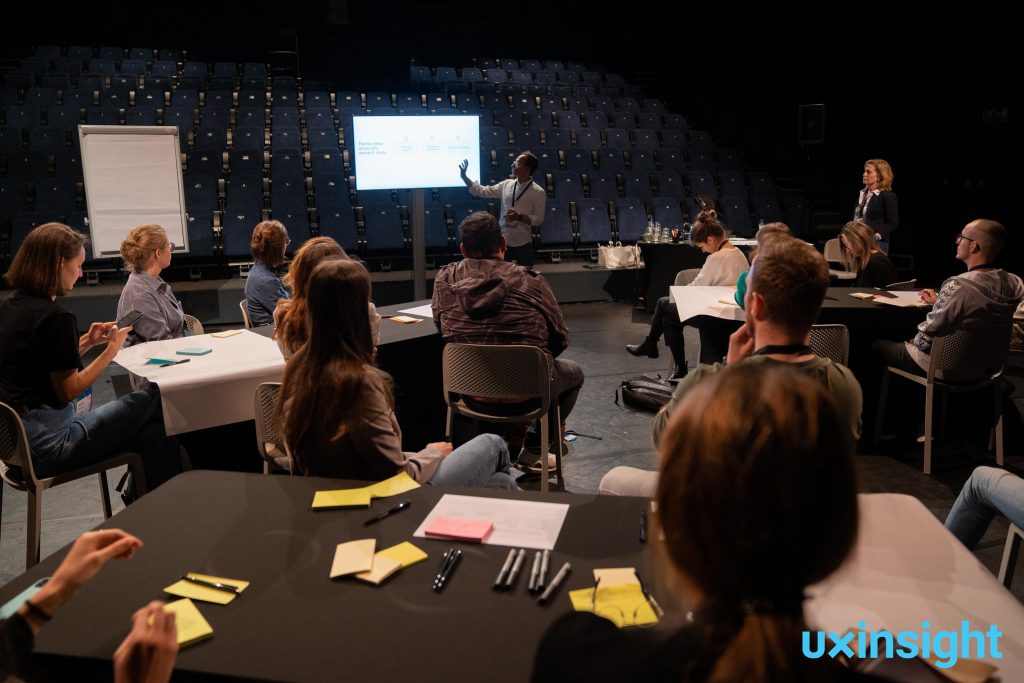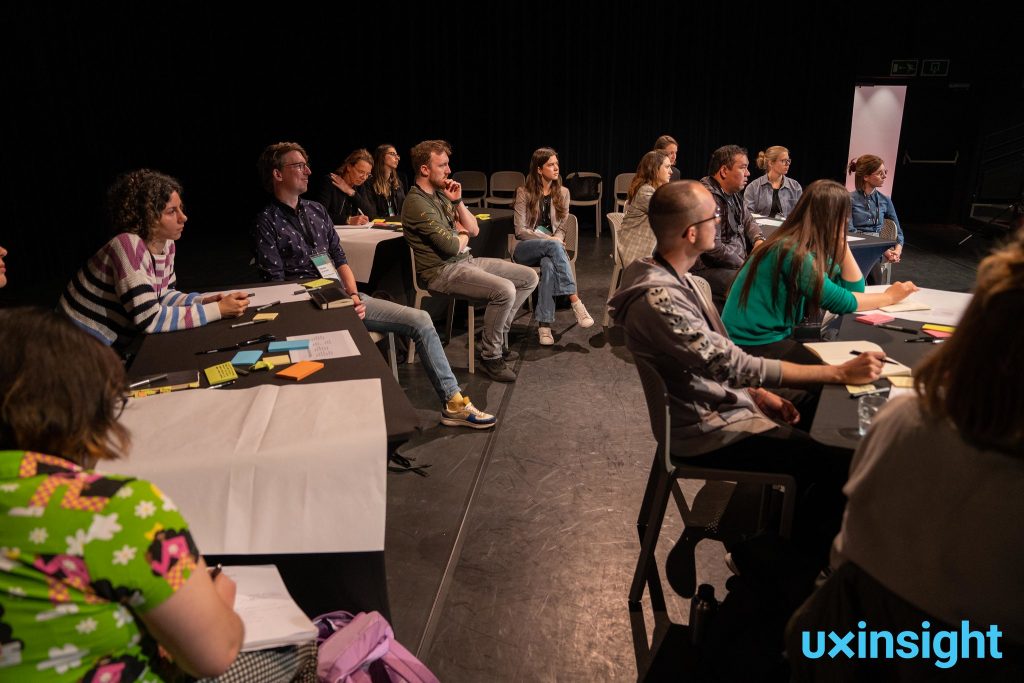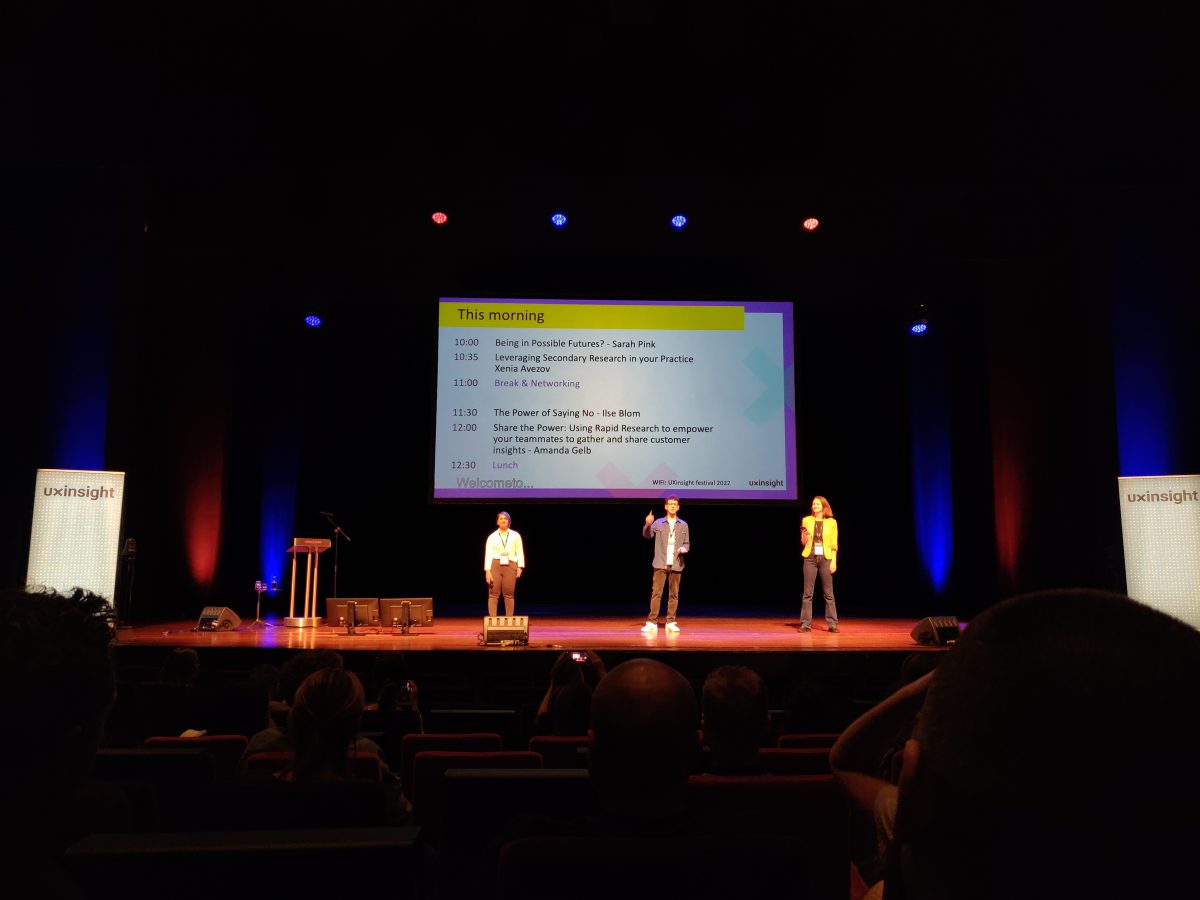UX Insight is the largest UX Research symposium in Europe where UX professionals can meet and share knowledge. The theme of this years festival was ‘Growth’.
Below you can find my 4 key learnings from the 3-day conference.
1. Make it fun & catchy: Insights should be exciting
The main deliverables of UX research are insights. Insights are what you share with stakeholders and colleagues to convey what you’ve figured out from your studies. Therefore, these insights should inspire and activate.
In their workshop, Markos Grohmann (UX Research & Strategy Lead Google) and Katy Mogal (Head of UX Research, Connected Experiences – Google Assistant) shared their process of going from fact to insight, based on their years of experience in the field. The bottom line: Take as much time to formulate proper insights as you do with the analysis of the results.


2. Don’t reinvent the wheel: The power of secondary research
Many UX researchers focus on conducting primary research because they expect that customers prefer to see direct feedback from their users in return. According to Xenia Avezov (Senior Researcher at Spotify), secondary research is vastly underestimated, and that’s a shame! You learn an awful lot about your users and stakeholders by looking back at earlier conducted research. It is therefore important to combine primary and secondary research methods to tell a complete story.
3. We’re better together: don’t do research alone!
UX researchers often work alone because they are the only (or one of the only ones) in their organization to conduct UX research for one or more product teams. But this is time-consuming, repetitive, and has an isolating effect, making it difficult to convince colleagues of the value of the research insights.
Amanda Gelb (Staff Researcher at Lyft) presented the “Rapid Research” method to handle research for her teams as efficiently as possible. The idea of Rapid Research is that you form one team with colleagues from other disciplines in designing, conducting and analyzing research. Each team member prepares their own research question and goes “speed dating” for 20 minutes with someone from the target group, allowing each team member to talk to 6 respondents in an average of 3 hours. The findings are then discussed in plenary and put on the strategic roadmap.
4. The value of UX research
Jacob Harbord (User Experience Research Lead at GXS) reflected on the continuous evolution of UX Research. The field now notices that it needs to shift the focus from creating insights, to assessing the value of insights. In his talk, Jacob showed the relationship between research and value of research, and that creating value requires a very different process.
To properly convey the value of your insights, there are three questions you must be able to answer:
- What Are you looking to gain insights for strategic or tactical reasons? And are you looking for very specific details or the big picture?
- Who What type of stakeholders do you want to address with your insights and trigger action?
- How What methods and what type of insights do you need to achieve your goals?
Thinking about these questions helps UX Research become more in tune with your audience, increasing the value of insights from research.
